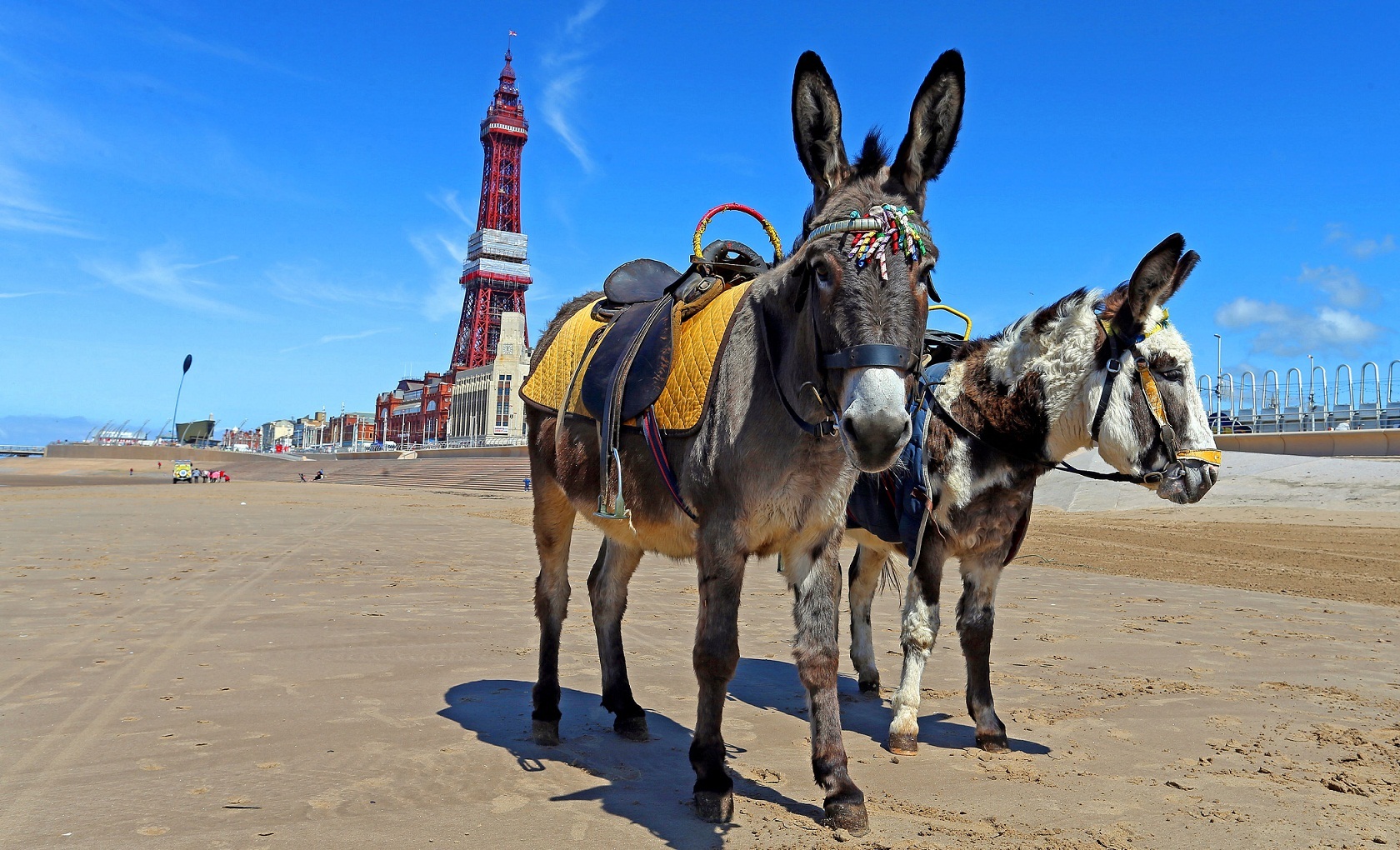
HOME of the pleasure beach, illuminations and kiss-me-quick hats, Blackpool was once renowned as the country’s favourite holiday destination.
But years of neglect and growing competition from the Costas saw the seaside resort’s popularity slump.
Now, though, Blackpool is back on the up and enjoying a welcome upturn in its fortunes.
New figures reveal hotel bookings this summer are up 72% compared with five years ago.
And visitor numbers have soared to levels last seen almost two decades ago. It follows a multi-million pound campaign to revitalise its once shabby seafront and town centre.
Hotelier Jane Seddon, whose family has just invested £2 million in the Sheraton on North Shore, said: “We believe in Blackpool.
“We’ve invested because we see a future. We wouldn’t be spending this kind of money if we didn’t.
“There’s a different feel about the place. It has taken time, but people can now see the results of the investment in the town and its attractions for themselves.”
In the 1980s around 20 million people a year visited Blackpool.
The numbers steadily dropped to 13 million in 1998 while fewer than eight million visited in 2007.
But last year more than 10 million holidayed there and it’s hoped even more will come this year.
The rise in visitors comes in the wake of a campaign by tourism chiefs to attract more families to the town.
They invested millions in the world-famous illuminations, new hotels, shops and restaurants.
Described as “the kind of thing you’d normally see in Vegas”, the lights will be switched on by film director Tim Burton on September 4.
Another £2m was spent by the pleasure beach to create a new Red Arrows white-knuckle ride, which opened to rave reviews this summer.
Amanda Thompson, managing director of the pleasure beach, said their continued investment will ensure “visitors can always enjoy a fantastic day out”.
Meanwhile football club chairman Peter Swann last week unveiled ambitious plans for a new multi-million pound five-star hotel in the shadow of the Tower.
The 96-bedroom hotel will include luxury suites with sea views. He said: “We see it as a real vote of confidence in the future of the town as a tourism destination. Our aim is to create a very special hotel that will be a real boost to the town’s visitor economy and points the way ahead for the resort in terms of the standards it has to reach.”
Earlier this year Peter Sedgwick, who already owned the town’s North Pier, invested £8.1m in the Central and South Piers. He said he made the commitment because the town is thriving.
“Last year was the busiest I have seen in donkey’s years,” he added.
“We are on the up.”
Andrea Tarpey, of LateRooms.com, believes the latest hotel booking figures show people are “rediscovering their love of the British seaside”. She said: “With great investment being made in the facilities and attractions, we see this as a trend that’s definitely set to continue.”HistoryFOR centuries Blackpool was nothing but a hard-to-reach speck on the map, home to craggy fishermen and grizzled farmers.
That all changed in 1781 when two entrepreneurs, Sir Henry Hoghton and Thomas Clifton, built a private road from Preston.
They persuaded stagecoach operators to visit three times a week from Manchester and Halifax.
Coaches were crammed full of well-to-do city folk, keen to escape the smog of the new industrial towns and cities.
But it was the invention of the railways which really saw Blackpool’s rapid transformation into the seaside mecca of northern England.
Its first gas light, forerunner of the famous illuminations, was installed in 1852 and the first of the town’s three piers was opened four years later.
The iconic 518ft Blackpool Tower copied from the Eiffel Tower opened in 1894. It was built in three years using 93 tons of cast iron and five million bricks. Fortune-tellers and pubs lined the promenade, while kids enjoyed fish and chips and donkey rides.
Marlene Dietrich lit up the seaside resort in the 1930s while Gracie Fields was a huge hit from 1932 through to her last appearance in 1965.
In those four decades millions of visitors poured into the variety shows on the pier to see comedians such as Ken Dodd and Little and Large.
The boom years continued into the 1970s and 80s but the lure of cheap foreign package holidays became too much for hard-working tourists and visitor numbers began to decline.

Enjoy the convenience of having The Sunday Post delivered as a digital ePaper straight to your smartphone, tablet or computer.
Subscribe for only £5.49 a month and enjoy all the benefits of the printed paper as a digital replica.
Subscribe